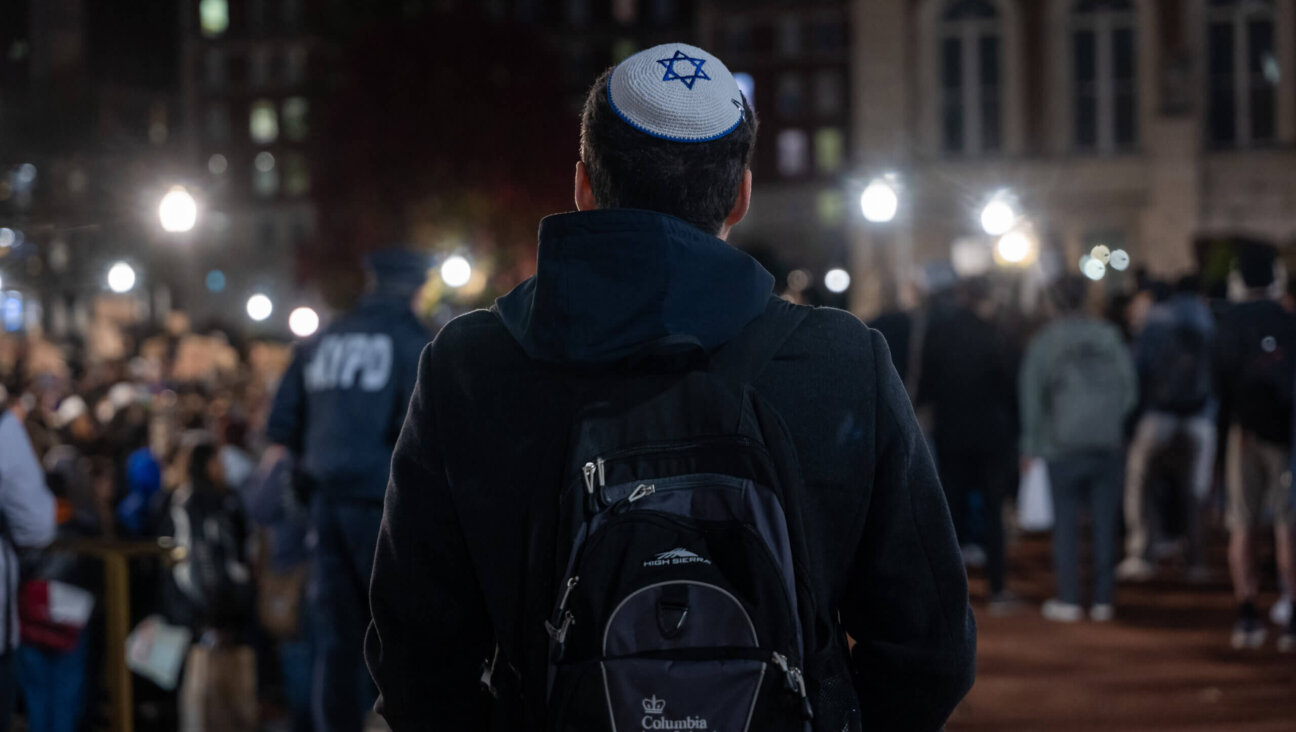Terrorists’ Rocket Changes Strategy Of Israeli Pullout
TEL AVIV — Prime Minister Sharon was clear and adamant. “We will make sure,” he told his audience, “that this will not happen again — not before the withdrawal from Gaza and not after.”
“This” was a Qassam rocket attack Monday on the Negev town of Sderot, two miles from the Gaza border. A day earlier, a barrage of the homemade rockets had left two Israelis dead, the first civilian casualties in a year of such attacks. Sharon came to town the next day to meet with the families and promise better security.
Awkwardly enough, it happened again, just moments after Sharon spoke. A few hundred yards from where he stood, two more Qassam rockets slammed into the town. This barrage left no casualties, although a third salvo later on injured one man.
More than 200 Qassam rockets have hit Sderot since the outbreak of the intifada, causing little more than irritation and minor property damage until now. Local citizens had come to see them as a nuisance, and spoke of them as causing damage to the town’s economy more than as a threat to life.
All this changed abruptly with Monday’s attack. The dead were Mordechai Yosipov, 50, and Afik Zehavi-Ohayon, 3. The Israeli public, which had enjoyed a relative respite from terrorist attacks in the past few weeks, once again was exposed to heartbreaking home movies of a toddler murdered a few steps away from his kindergarten, where his mother was bringing him to prepare for a year-end party.
The Qassam attacks came just a day after one the greatest tactical successes of Palestinian guerrillas in the past year: They managed to dig a 200-yard tunnel under an Israeli army fortification near the Netzarim junction, haul in an estimated half-ton of explosives and blow the outpost to bits. One soldier died in the attack; other soldiers who normally would have been at the targeted spot were elsewhere on the post, watching a televised soccer game. The number of casualties, however, was much less important than the symbolic impact of toppling an army fort.
For Sharon, the news is ominous on several levels. His personal homestead, the sprawling Sycamore Ranch, lies just a few miles east of Sderot, and with the improvements in the rockets’ armament and propulsion made evident this week, a direct attack on the prime minister’s house is no longer out of the question. Despite continual Israeli attacks on the workshops where rockets are manufactured, the Palestinian extremist organizations appear to retain a distinct capability to produce them.
While the personal threat to Sharon is remote, the attacks sent a more pressing political and military message to the prime minister: They drove home the extent and complexity of the problems Israel will continue to face even after Sharon’s disengagement plan is carried out.
Sharon’s dilemma is twofold. Politically, the new threats weaken his arguments for withdrawal from Gaza. Sharon and his allies maintain that pulling out of Gaza will allow Israel to seal off the border and put distance between itself and the terrorists. The Palestinian tactical successes this week suggest that the new border will be more porous than previously thought.
Militarily and diplomatically, too, the attacks undermine Israeli planning. At present, Israeli troops operate freely in Gaza and can respond to rocket and tunnel attacks by moving swiftly against the perpetrators and planners. After withdrawal, any Israeli response will require a complex cross-border operation, bringing with it heightened military risks as well as inevitable diplomatic costs.
This was not the first attempt to blow up an Israeli military stronghold using a so-called “explosive tunnel.” A similar operation was carried out two years ago against Israel’s Termit outpost, along Gaza’s southern border.
Tunnel digging, it is painfully clear, will remain a major Israeli concern after the planned withdrawal. Concerns focus both on the Egypt-Gaza border, where tunnels are used to smuggle arms into the Palestinian zone, and increasingly on the Israeli-Palestinian border, where they may be used after the withdrawal to infiltrate terrorists into Israel or to serve as starting points for attacks on Israeli soldiers.
The rocket threat has been mentioned many times by opponents of the disengagement plan. They claim that once Israeli troops move out, Palestinians could easily work on improved versions of the Qassam, and become capable of hitting not only Sharon’s ranch but also the city of Ashkelon.
Both sides in the debate point to the Lebanon precedent. Supporters of disengagement claim that before Israel withdrew from Lebanon in 2000, there were dire predictions that Hezbollah would fire rockets on Israel’s northern cities, but this has not occurred in over four years. Opponents reply that in the meantime Hezbollah has amassed several thousand rockets, and created a de facto balance of terror with Israel. Israel cannot allow a similar situation to develop in Gaza, they claim.
The debate revolves around the basic question of whom Israel is willing to negotiate with, directly or indirectly. Even when Israeli troops maintained the “security zone” in Lebanon, there were clear, if unspoken, rules of engagement with Hezbollah. The Shi’ite organization made it a practice not to fire Katyusha rockets unless Israel had, in its view, violated those rules. Israel understood Hezbollah’s red lines and informally sought to avoid them. But few Israeli decision-makers currently are willing to countenance such a de facto agreement with organizations such as Hamas or Islamic Jihad.
Fears that the Gaza border will become a flashpoint after the withdrawal have led to intensive efforts in recent weeks, mainly by Egyptian negotiators, to hammer out a cease-fire agreement with Hamas and other militant groups. Egypt’s intelligence minister, General Omar Suleiman, has met repeatedly in recent weeks with Israeli Defense Minister Shaul Mofaz and other security chiefs to “report” on his progress and hear Israel’s reactions. Sharon repeatedly has denied that the Suleiman shuttles constitute an indirect negotiation with the Palestinian Authority, much less Hamas. Still, he has praised Egypt’s efforts, drawing fire from opponents who claim he is subcontracting Israel’s security to its foes. This weeks attacks ensure that the criticism of Sharon will intensify in the days ahead.
Immediately after the Qassam attacks the army invaded the Gaza town of Beit Hanun and uprooted orchards from which, it claimed, the rockets were fired. This has become almost routine in the past four years; it did little to reassure Israelis that a solution to the problem was indeed at hand.

I hope you appreciated this article. Before you go, I’d like to ask you to please support the Forward’s award-winning journalism this Passover.
In this age of misinformation, our work is needed like never before. We report on the news that matters most to American Jews, driven by truth, not ideology.
At a time when newsrooms are closing or cutting back, the Forward has removed its paywall. That means for the first time in our 126-year history, Forward journalism is free to everyone, everywhere. With an ongoing war, rising antisemitism, and a flood of disinformation that may affect the upcoming election, we believe that free and open access to Jewish journalism is imperative.
Readers like you make it all possible. Right now, we’re in the middle of our Passover Pledge Drive and we need 500 people to step up and make a gift to sustain our trustworthy, independent journalism.
Make a gift of any size and become a Forward member today. You’ll support our mission to tell the American Jewish story fully and fairly.
— Rachel Fishman Feddersen, Publisher and CEO
Join our mission to tell the Jewish story fully and fairly.
Our Goal: 500 gifts during our Passover Pledge Drive!























